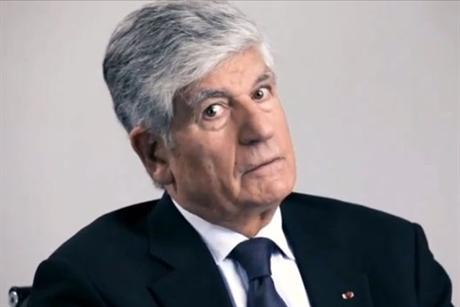Out of the COI frying pan into the fire of a fashion launch for brand marketer Chris Wood
For years, you’ve run your own brand consultancy. After successfully selling it, you step into the limelight as chairman of the Central Office of Information, only to find that mad axeman and part-time cabinet minister Francis Maude is cutting off at the knees the very organisation you’ve just been invited to head. What next?


Reilly’s company, where Wood is a non-executive director and adviser, is ambitiously pitching itself at the very top of a very discriminating market – with a price-tag to match. The initial range, admittedly exquisitely hand-crafted, starts at £95 for a tooled leather phone case and escalates to an eye-watering £1,400 for a weekender bag (roughly the price of a Manolo Blahnik handbag or a Jimmy Choo tote). This new brand has no intention of being a Mulberrry also-ran, no siree.
So why is Reilly so confident about his ambitious positioning? The answer lies not so much in the quality of the goods – that’s a given when competing with the likes of Louis Vuitton, Armani and Alfred Dunhill – but in a judicious soupçon of Formula One. A soupçon, because too much of it will asphyxiate the brand with the rank odour of “petrol-head” and “anorak” – in short, death by downmarket male. While there’s no escaping Dom Reilly’s essentially masculine appeal, the idea is to imbue the brand with FI’s sophisticated reputation for engineering excellence and technological innovation. One of the accessories, for instance, is a beautifully finished crash helmet case; and some of the collection features a special high-density foam used in F1 cockpits that absorbs almost all shock on impact.
Reilly, given his 6 years as head of marketing at Williams, has second-to-none access to one of the world’s most sophisticated R&D departments. But he has to be careful how he plays the Williams card. Few team brands, with the exception of Ferrari, have much charisma off-track. And in any case, Williams has not performed well of late (one, but only one, good reason, why the Williams name is not directly associated with the brand). Instead, an aura of cutting-edge R&D is being subtly diffused through the person of Patrick Head, co-founder of Williams F1 and its fabled chief of design – who just happens to be a founder shareholder in Dom Reilly.
In truth, the attractions of launching an haute gamme fashion brand are there for all to see: salivating margins and high resilience to recession. Equally, so is the demerit: everyone’s at it. The sector has become crowded with participants touting increasingly obscure and recondite “provenance”: the 17th century Huguenot diaspora, the Empress Josephine’s personal dressmaker etc (I made those up, but you know what I mean). So attaching your brand to future-directed technology with wide aspirational appeal is certainly a point of difference.
But that’s not to say fashion and high-octane auto culture are natural bedfellows, as the history of the Ferrari brand all too clearly illustrates. “It’s interesting,” says Wood, “That in the last top Gear I watched, they were extolling the virtues (and innocence) of Pagani (750bhp hypercars, costing three times as much as a Lamborghini and correspondingly rare), while referring to the Maranello mob (i.e. Ferrari) as ‘purveyors of key rings and baseball caps’. And about Lamborghini as a contrivance of Audi. Out of the mouths of children, and even Clarkson, can come a certain wisdom.”
Indeed.
This post first appeared on Stuart Smith’s blog The Politics of Marketing.








